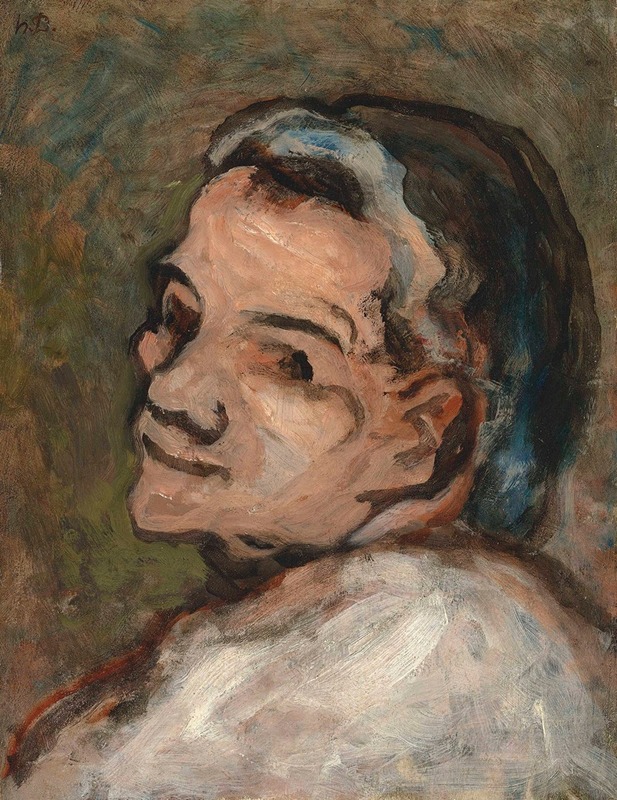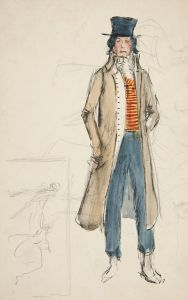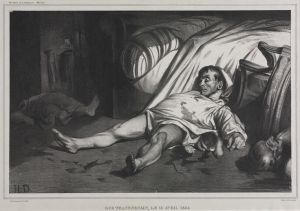
Tête de Scapin
A hand-painted replica of Honoré Daumier’s masterpiece Tête de Scapin, meticulously crafted by professional artists to capture the true essence of the original. Each piece is created with museum-quality canvas and rare mineral pigments, carefully painted by experienced artists with delicate brushstrokes and rich, layered colors to perfectly recreate the texture of the original artwork. Unlike machine-printed reproductions, this hand-painted version brings the painting to life, infused with the artist’s emotions and skill in every stroke. Whether for personal collection or home decoration, it instantly elevates the artistic atmosphere of any space.
Honoré Daumier, a prominent French artist known for his satirical works and keen observations of society, created the painting "Tête de Scapin" in the 19th century. Daumier was a multifaceted artist, excelling as a painter, caricaturist, and sculptor. His works often reflected his interest in the human condition and social issues, and "Tête de Scapin" is no exception.
"Tête de Scapin" is a part of Daumier's exploration of theatrical characters, specifically drawing inspiration from the commedia dell'arte, a form of theater characterized by its use of masked types and improvised performances. Scapin, the character depicted in this painting, is a stock character from this tradition. Known for his cleverness and trickery, Scapin is a servant who often outsmarts his masters, embodying themes of cunning and social inversion.
The painting itself is a testament to Daumier's skill in capturing the essence of his subjects with minimalistic yet expressive brushwork. "Tête de Scapin" focuses on the character's head, emphasizing facial expressions that convey Scapin's mischievous and cunning nature. Daumier's use of light and shadow adds depth to the character's features, highlighting the theatricality and drama inherent in the subject.
Daumier's choice to depict Scapin aligns with his broader artistic interests. Throughout his career, Daumier was fascinated by the theater and its characters, often attending performances and drawing inspiration from the actors and their roles. This interest is evident in his numerous works that explore theatrical themes and characters, showcasing his ability to translate the dynamic energy of the stage onto canvas.
"Tête de Scapin" is also significant in the context of Daumier's broader body of work. While he is perhaps best known for his lithographs and caricatures that critiqued the political and social climate of his time, his paintings, including "Tête de Scapin," reveal another dimension of his artistic talent. These paintings demonstrate his ability to capture psychological depth and complexity, moving beyond mere satire to explore the nuances of human expression and emotion.
The painting is housed in the Musée d'Orsay in Paris, a testament to its importance within the canon of 19th-century French art. The museum, renowned for its extensive collection of Impressionist and Post-Impressionist masterpieces, provides a fitting home for Daumier's work, highlighting his influence on subsequent generations of artists.
In summary, "Tête de Scapin" by Honoré Daumier is a compelling example of the artist's engagement with theatrical themes and characters. Through his expressive brushwork and keen understanding of human nature, Daumier brings the character of Scapin to life, capturing the essence of the commedia dell'arte tradition. This painting not only reflects Daumier's artistic interests but also underscores his significant contribution to the world of art, bridging the gap between satire and psychological exploration.


















